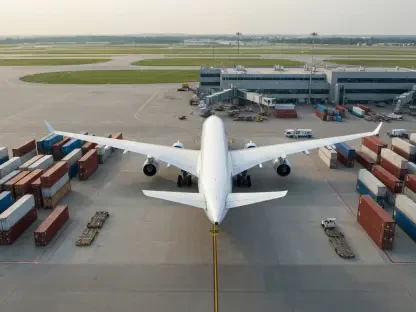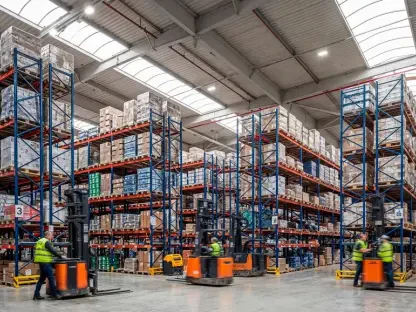In a marketplace defined by rising shipping costs, unpredictable demand, and escalating customer expectations, the necessity for more effective and dynamic warehouse strategies has never been more pressing. Technology, particularly in small and midsize warehouse operations, has become the key differentiator in meeting these challenges. The evolution of warehouse automation technologies has catalyzed a transformation, enabling these businesses to adapt and excel in an increasingly demanding environment. This review explores the critical aspects of this technological landscape, detailing the specific solutions that are reshaping the future of warehouse operations.
Evolution and Importance
Warehouse automation technologies have rapidly evolved, offering innovative solutions that address the unique challenges of today’s supply chain dynamics. These advances are not just about replacing manual labor but optimizing operations, improving accuracy, and enhancing overall efficiency. Originating within the broader technological boom, these systems emerged from the need for more robust and flexible processes in logistics. Their relevance is underscored by the industry’s shift towards more agile and decentralized supply chain models, requiring smaller operations to adopt tools once reserved for larger enterprises.
Within this context, the importance of automation lies in its ability to democratize access to high-tech solutions, allowing small and midsize businesses to compete on a level playing field. By integrating these technologies, warehouses can increase throughput, improve inventory accuracy, and reduce the likelihood of errors, ultimately leading to improved customer satisfaction and business growth.
Features and Performance Analysis
Autonomous Mobile Robots (AMRs)
Autonomous Mobile Robots have become a staple in modern warehouses, offering unparalleled functionality in terms of flexibility and mobility. These robots can efficiently navigate complex warehouse environments, transporting goods and optimizing workflow. Their significance is particularly pronounced in settings where labor shortages are acute, as AMRs can supplement human efforts and alleviate operational bottlenecks. Their performance shines through in repetitive tasks such as order picking, reducing human error and enhancing safety by minimizing unnecessary movement.
Real-Time Inventory Management Systems
The adoption of Real-Time Inventory Management Systems, leveraging IoT, RFID, and AI technologies, has revolutionized inventory tracking and management. These systems provide real-time data that enhances precision in stock levels, preventing losses from overstocking or shrinkage. IoT sensors work in tandem with RFID tags to maintain accurate inventory counts, while AI analytics predict trends and optimize stock levels efficiently. This dynamic, predictive approach ensures that warehouse operations are proactive rather than reactive, facilitating swift responses to market demands.
Cloud-Based Warehouse Management Systems (WMS)
Cloud-Based WMS exemplifies the modernization of small to midsize warehouse operations by providing scalable, integrated management solutions. They eliminate the need for costly on-premises infrastructure, offering flexible, accessible, and secure solutions that enhance operational efficiency. These systems enable seamless integration with existing tools, such as e-commerce platforms and ERP systems, ensuring a coherent and interconnected supply chain. By streamlining tasks like receiving, tracking, and shipping, cloud-based WMS empowers businesses to operate with greater agility and responsiveness.
Innovations and Industry Impact
Recent advancements in warehouse automation technologies have continuously pushed the boundaries of what is possible. Emerging trends such as Robotics-as-a-Service (RaaS) further democratize access to advanced robotic solutions by offering subscription-based models that reduce upfront costs. These innovations signal a broader shift towards more service-oriented models in technology, reflecting the industry’s drive for flexibility and scalability. The impact on the warehouse landscape is profound, with these developments poised to redefine efficiency standards and competitive dynamics across the sector.
Practical Implementations
Warehouse automation technologies have found significant traction across a variety of industries, from retail to manufacturing. Notable implementations showcase the versatility and adaptability of these solutions. For example, in e-commerce, automation technologies have enabled same-day shipping capabilities, catering to heightened consumer expectations. Moreover, in the perishables sector, precise inventory management systems ensure freshness and reduce waste, proving the tangible benefits of these technologies in diverse operational contexts.
Challenges and Solutions
While warehouse automation technologies promise numerous benefits, challenges persist. Technical hurdles relating to system integration and compatibility can hinder seamless deployment. Additionally, regulatory issues concerning data security and workforce implications also pose significant barriers. The need for continued development in these areas remains critical, with efforts centered on creating interoperable solutions and robust security frameworks. Addressing these obstacles is paramount to fully unlock the potential of automated systems in warehousing.
Future Considerations
The trajectory of warehouse automation technologies suggests an era of rapid innovation and increasing adoption. Potential breakthroughs could include more sophisticated AI-powered analytics, further enhancing decision-making accuracy and operational efficiency. As these technologies continue to mature, their long-term impact is likely to extend beyond individual businesses, affecting broader economic and logistical landscapes. Proactive engagement with these advances will enable industries to harness their full potential, shaping a future where automation is integral to operational success.
Concluding Thoughts
The review highlighted the transformative impact of warehouse automation technologies on logistics operations and their increasing indispensability in the marketplace. By enhancing efficiency, accuracy, and flexibility, these technologies have set new standards for warehouse management. As the industry progresses, integrating these systems into broader strategic frameworks will be crucial to sustaining competitive advantage. Ultimately, the judicious adoption and integration of these technologies hold the promise of unlocking new levels of efficiency and innovation across the supply chains of tomorrow.









